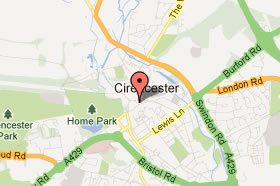CBCT and OPT Scan referrals
Price Guide
| CBCT Scan (at Cirencester only) | £195 |
| OPT/Panoral X-ray (at Cirencester only) | £45 |
Or if you would prefer to print and post your referral to us
The most accurate planning for Implant surgery
What is a Dental CT Scanner?
 A CT Scanner (computerised tomography) is a special kind of X-ray device that produces 3D colour images of your head, teeth, jaw bone and facial muscles in incredible detail. The conventional x-ray views most familiar to patients are only 2-dimentional and subject to varying degrees of distortion and inaccuracy. Where important anatomical structures must be avoided, the information they provide may therefore by inadequate.
A CT Scanner (computerised tomography) is a special kind of X-ray device that produces 3D colour images of your head, teeth, jaw bone and facial muscles in incredible detail. The conventional x-ray views most familiar to patients are only 2-dimentional and subject to varying degrees of distortion and inaccuracy. Where important anatomical structures must be avoided, the information they provide may therefore by inadequate.
The CT scan in contrast can provide life-sized 3-dimensional information of all regions of the upper and/or lower jaw from which precise measurements can be taken for pre-operative treatment planning. In some cases, the CT scan may also be used to evaluate the results of bone-grafting procedures prior to placing Implants.
What are Dental and Dental Implant CT Scans used for?
Dental CT scans allow dentists to plan for complex dental procedures with incredible precision and accuracy by providing information about jaws in all three dimensions.
 Diagnostic Dental CT scans are useful to Dentists in some of the following ways:
Diagnostic Dental CT scans are useful to Dentists in some of the following ways:
- To check a patient’s suitability for Dental Implants
- To check bone quality prior to placement of Dental Implants
- To find the most suitable area in the jaw bone to place a Dental Implant
- To have a 3D view of the sinus cavities, to assess the need for Sinus Lifts/Augmentation for Dental Implants
- To evaluate Wisdom Teeth prior to removal
- To look at the position of local nerves and arteries
- Benefits to other general dental treatments, e.g. RCT where it gives precise Root Canal length.
What is an OPT/Panoral X-ray?
A Panoral Radiograph or Panoral X-ray will give your dentist a clearer view of your oral cavity, compared to conventional dental x-rays. A Panoral X-ray is a single clear image of your oral cavity and surrounding bones; this two-dimensional Panoral Radiograph gives your dentist a better view of your oral cavity, enabling him/her to pinpoint the specific problems that need to be addressed.
What OPT/Panoral X-rays used for?
A Panoral Radiograph can give clear images of other parts of the oral cavity that cannot be viewed through a conventional dental x-ray; these areas include the following:
- The entire lower and upper jawbone
- The nasal sinuses, as well as the bone surrounding the area
- The mandibular nerve, or the nerve that gives feeling to the gums and lower jaw area
- The jaw joints, or the temporomandibular joints (TMJ).
* All prices on this website are subject to change without notice. While we make every effort to provide you the most accurate, up-to-date information, occasionally, one or more items on our website may be mispriced. We reserve the right to refuse to honour any incorrect prices.







